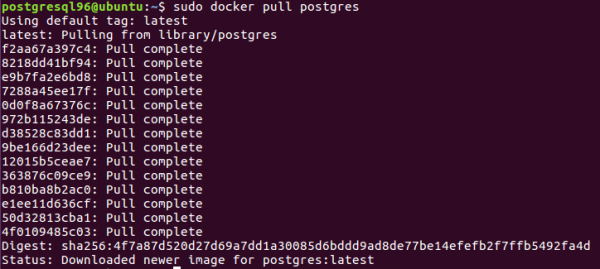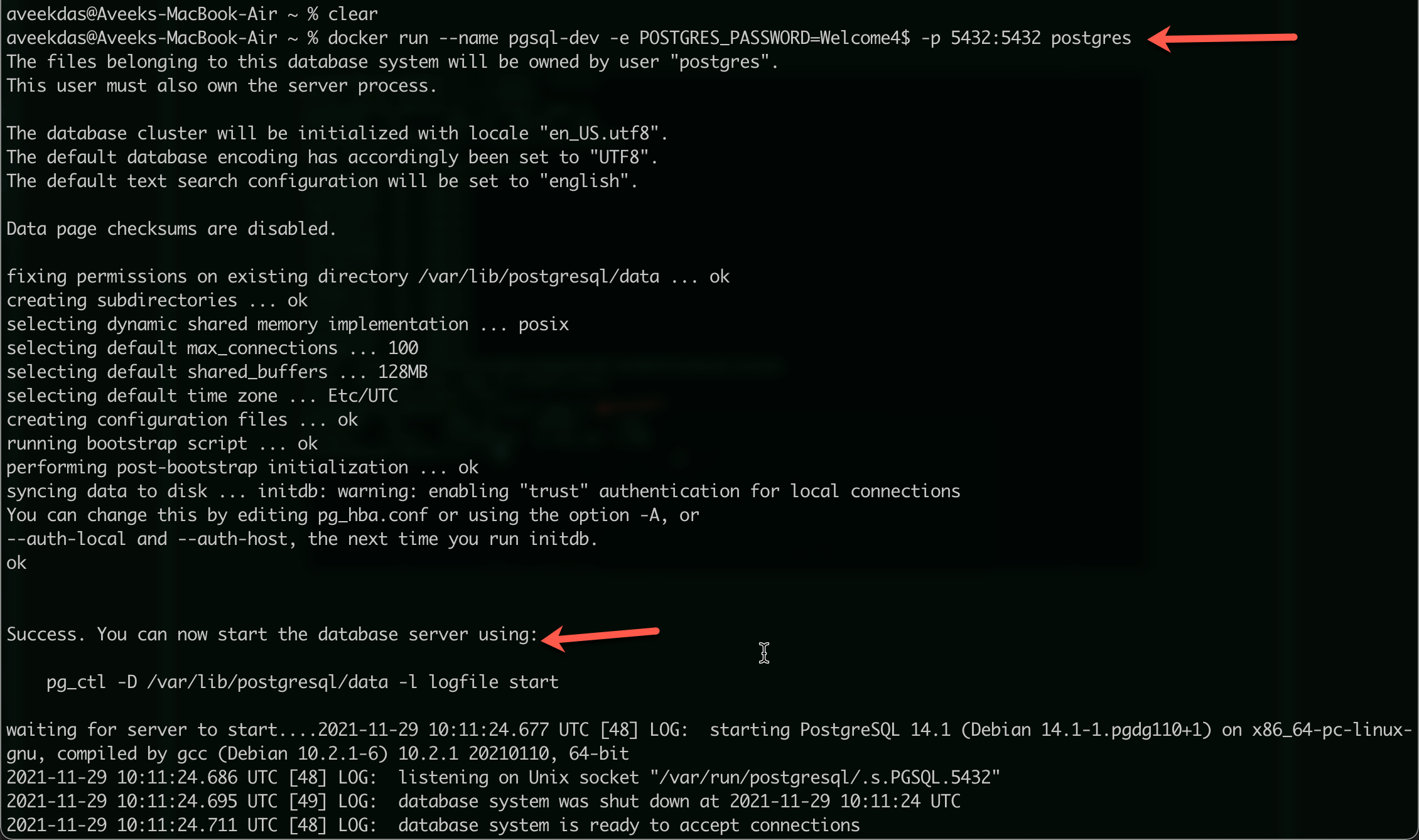

- #RUNNING POSTGRES IN DOCKER HOW TO#
- #RUNNING POSTGRES IN DOCKER INSTALL#
- #RUNNING POSTGRES IN DOCKER MANUAL#
- #RUNNING POSTGRES IN DOCKER CODE#
These steps are mostly for moving development data around or pulling (partial) production data locally for debugging, or something along those lines.
#RUNNING POSTGRES IN DOCKER MANUAL#
If you use any of these manual steps as a means to create backups, you're probably doing something not entirely correct. Please keep in mind that you should always ensure your production databases are properly backed up, and ideally automatically so. There are certainly other ways to achieve something similar, but this method will work in a pinch.

manually created) container to another, you could use pipes to do this in one command, like so: docker exec -i pg_old_container_name /bin/bash -c "PGPASSWORD=pg_password pg_dump -username pg_username database_name" | docker exec -i pg_new_container_name /bin/bash -c "PGPASSWORD=pg_password psql -username pg_username database_name" Conclusions If you, for example, are moving data from one (e.g. If you would instead prefer to stop the import completely upon error, be sure to add -set ON_ERROR_STOP=on to your above command. Note: By default PostgreSQL keeps importing even when errors occur.
#RUNNING POSTGRES IN DOCKER HOW TO#
Note: If you are attempting to restore data from a custom format dump, you should instead use pg_restore as I described in my How to set up and use Postgres locally article. Since you are not able to provide a password directly through arguments, we rely on the PGPASSWORD environment variable: docker exec -i pg_container_name /bin/bash -c "PGPASSWORD=pg_password psql -username pg_username database_name" < /path/on/your/machine/dump.sql Dump using pg_dump docker exec -i pg_container_name /bin/bash -c "PGPASSWORD=pg_password pg_dump -username pg_username database_name" > /desired/path/on/your/machine/dump.sql Restore using psql This quickie assumes you have nothing directly installed on your development machine, so everything is run straight from and to the Docker PostgreSQL container you're running. Depending on why you need to dump/restore a database, this might help for you, too. I ran into this just today, and thought I'd share one method that I felt was easy, fast and served my purpose.
#RUNNING POSTGRES IN DOCKER CODE#
Open the file ( models/item.go) and add the following code to it: package modelsįunc (i *Item) Bind(r *http.: Updated the guide with a more up-to-date method for sending a password along with the commands. We do this by making our model implement the chi.Renderer interface i.e, by implementing a Render method for it. With chi, we also get the benefit of rendering them as JSON objects to our API consumer.

For our case, this model is in the item.go file in the models folder. We need models to ease how we interact with the database from our Go code. GET /items/ -path db/migrations up Using structs as models.GET /items to fetch all existing items in the list.POST /items to add a new item to the list.We'll also demonstrate how PostgreSQL can be installed, configured, and run on Docker. Similarly, we can pull preconfigured Docker images of the PostgreSQL database server from Docker Hub. Generally, we run a Docker container using the public Docker image.
#RUNNING POSTGRES IN DOCKER INSTALL#
In more concrete terms, our API will expose the following endpoints: Overview In this tutorial, we'll learn how to install PostgreSQL with Docker. In this tutorial, we will be building a containerized bucket list API using go-chi, PostgreSQL, and Docker.

It is especially useful for when you want the benefits of modular request handling without the batteries that come with using a full-blown web framework. Go-chi is a lightweight router library for building HTTP services in Go. Michael Okoko Follow Linux and Sci-Fi ➕ = ❤️ How to build a RESTful API with Docker, PostgreSQL, and go-chi


 0 kommentar(er)
0 kommentar(er)
